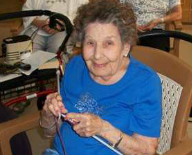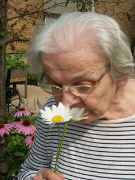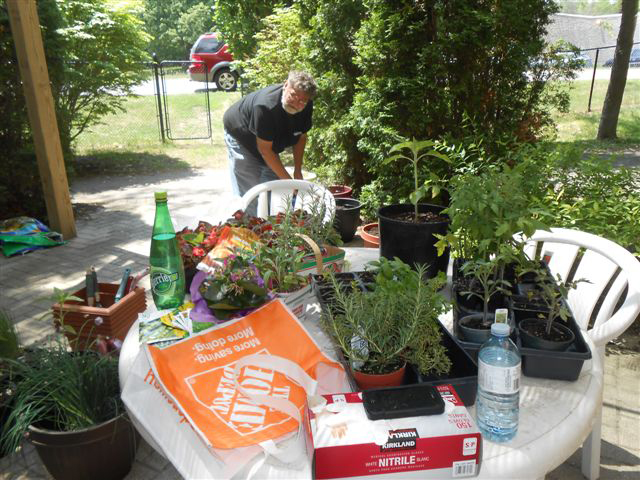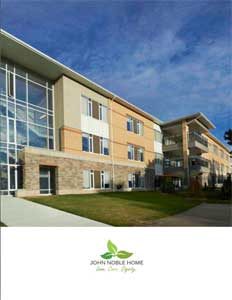Providing love, care, and dignity within a home-like environment
The John Noble Home is a non-profit, long-term care home, owned and operated by the cities of Brant and Brantford, Ontario. It is managed by a Committee of Management consisting of ten counselors from the two municipalities and it is regulated by the Ministry of Health and Long Term Care for the Province of Ontario. The John Noble Home campus sits on approximately 25 acres in West Brantford.
The original John Noble Home was built in 1954. Its progenitor was a Poor House whose history dates back to the 1800s. The Home was named after John D. Noble, an Irish émigré and local Alderman who had a particular interest in improving the quality of life for the infirm and the elderly confined to institutional living.
When it first opened, the Home accommodated 78 residents. A series of expansions and contractions took place over the ensuing decades, with the number of beds rising to a maximum of 406 in 1969. Major renovations in 1990 brought the total back down to 364, and in 2004, 205 beds were transferred to another local health care provider.
 Today the John Noble Home campus houses 156 long-term care beds, a Day Program for community clients with dementia, and 26 units of affordable housing for independent seniors age 60 and older. The average age of its long-term care population is 82, and the average length of stay is two years. Most of the long-term residents have mobility problems, and require complex care for their multiple diagnoses.
Today the John Noble Home campus houses 156 long-term care beds, a Day Program for community clients with dementia, and 26 units of affordable housing for independent seniors age 60 and older. The average age of its long-term care population is 82, and the average length of stay is two years. Most of the long-term residents have mobility problems, and require complex care for their multiple diagnoses.
While the Home’s priority is city and county residents, it cannot turn down long-term care patients based on their residence. All applications to long-term care homes in Canada are coordinated by each local CCAC (Community Care Access Centre.) Applicants must go through the CCAC process in order to be admitted to the Home’s long term care services and Day Program whereas the facility’s affordable housing units are accessed through the City of Brantford’s Housing Department.
Donna Michaels, the John Noble Home’s Administrator talks about some of the changes that continue to occur at the Home, as well as some she’d like to see take place. “Now we are talking about a campus of care, as opposed to just long-term care, which is our traditional roots. In addition to our long-term beds, we have a day care program for people with dementia and Alzheimer’s. We are seeing larger amounts of folks with dementia. It’s our biggest challenge at this point.”
The Day & Stay program Michaels mentions is a community-based service funded, in part, by the Hamilton, Niagara, Halidimand, Brant LHIN (Local Health Integration Network), through the Ministry of Health and Long Term Care. It provides door-to-door transportation, lunch, socialization, and activity programs, and is headed by a staff trained in the areas of gerontology, recreation, and leisure activities designed specifically for individuals with memory problems. The “Day” part of the program is for a half-day. The program also offers a weekend visit, where participants get to “Stay” overnight, “and that program,” says Michaels, “is not only for people with dementia who live in the community, it’s also for their caregiver – for respite.”
In addition, the Alzheimer’s Society of Brant is a tenant on the campus. It provides dementia education and awareness to the community. Michaels explains, “We try to make the campus friendly to people in the community because there’s still a lot of fear and stigma around long-term care and the aging process.”
Another recent change that Michaels believes adds to the  Home’s mission of “providing love, care, and dignity within a safe and home-like environment,” is the addition of reception hours in the evenings and weekends. Also, a maintenance staff-person is now present 24 hours a day, seven days a week, 365 days of the year. And some of the changes she would like to see? “Right now the tenants in the apartments do their cooking on their own. If we had a ‘Meals on Wheels’ program, we could provide not only for them, but out to the community.”
Home’s mission of “providing love, care, and dignity within a safe and home-like environment,” is the addition of reception hours in the evenings and weekends. Also, a maintenance staff-person is now present 24 hours a day, seven days a week, 365 days of the year. And some of the changes she would like to see? “Right now the tenants in the apartments do their cooking on their own. If we had a ‘Meals on Wheels’ program, we could provide not only for them, but out to the community.”
When asked what differentiates the John Noble Home from similar establishments, Michaels refers to the Home’s bucolic surroundings. “There’s lots of green space around us. It’s not unusual to see lots of nature, anything from birds to deer. That’s pretty special for our seniors. They can look out their windows and see gardens, trees, and birds.” She also alludes to the fact that the Home’s 300 employees, many of them long-standing, are “satisfied and engaged.” She continues, “We’re very much committed to quality initiatives. We have a huge quality framework that we work on in every department, every service level. You’re always looking to improve.”
Michaels’ pride in her staff shines when she speaks about the 2014 fire that caused a million dollars of damage in a non-residential area of the campus. “Our emergency preparedness and planning kicked in very well, and we had no injuries to the residents, or the staff, or anybody. We’re very proud of that.”
Dr. Willem Bourma is the current Chair of the Home’s Committee of Management. His main priority for the future is to use whatever money they have as prudently and smartly as possible. “If we really innovate, we can serve the people in our community much better without having to go to the municipalities or the provincial government for more money. And if Donna keeps throwing out ideas in how we can utilize some of our vacant space inside buildings, and also what we can do with the property, we can make those things happen.”
The vision statement of the John Noble Home is simple and concise: “To continue excellence now and in the future.” As the Home enters its sixth decade of providing quality care to its senior residents, it is apparent that that vision has been and will continue to be achieved.
AT A GLANCE
WHO: The John Noble Home
WHAT: A not-for-profit, municipally owned and operated, long term care home.
WHERE: Brantford, Ontario, Canada
WEBSITE: www.jnh.ca




